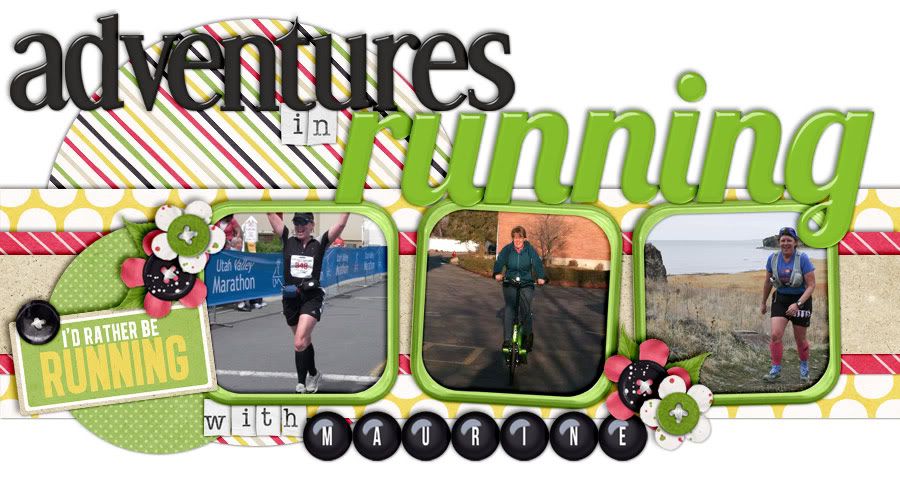After reading a post on Facebook about the Maffetone Method a couple of weeks ago, it reminded me about the first time I read of this method of training in the book Finding Ultra. Rich Roll in that book described how he had already been a good athlete, but when he started training seriously for the Ultraman race, his trainer put him on a training program where he couldn't let his heart rate get over a certain number of bpm and in the beginning he even had to walk hills and some flats in order to keep his heart rate down. However, over time, his body adjusted to the training and he reached speeds and endurance that he had never been able to accomplish before.
I can't claim to have ever had speed, but I thought I had good endurance. However, after researching the "slow" training method, there were several aspects that intrigued me:
- This is supposed to be a good training method for athletes that are injured (looking at my foot – I checked this off)
- The first few weeks speeds might be as slow as 17 minutes per mile (or slower) – (check – good method to improve my running while I am really slow)
- This method is an effective way of determining aerobic capacity and increasing it (need that)
- The method is supposed to teach your body to burn fat instead of carbs (Ok – I have an excess of fat – I can use that).
After thinking about it for a couple of weeks and talking it over with my daughter, I decided to give it a try. I wouldn't be following the initial training plan totally because that calls for never letting your heart rate going above the plan max and I have both the St. George Marathon and Detroit International Marathon ahead of me – but I figure those two exceptions are better than multiple excuses for putting it off.
Step 1: Calculate the heart rate range. Under the Maffetone Method, this is 180 – your age (+/- exceptions). 180-52 equals 128! Yowza! I needed to keep my heart rate between 118-128 bpm in all exercising.
Step 2: Find my heart rate monitors. Dug through drawers and found three of them.
- Garmin Heart Rate strap to go with my Garmin Forerunner 305. After much experimentation the light bulb went off and I figured out I had to sync it to my Garmin.
- Polar Heart Rate strap and monitor. Using the strap at my gym will allow me to train on treadmills.
- Pear Bluetooth strap – allows me to train using my Pear app if all else fails.
Step 3: Run
Tuesday night I went out for my first run. Set my minimum and maximum heart rate alarms on the Garmin and did a 6 mile run. Or walk. Or really slow trot. I fairly quickly realized that this was going to be fairly hard at the start on the roads. My speed was between 4.2 mph down to 3.2 mph. Very frustrating – but a good indication that I do not have the aerobic fitness I thought I had.
Thursday night I went to the gym to use the treadmill. 5 miles on the treadmill with my initial pace at 4.3 mph and down to a lowly 3.2 mph by the end. I just gradually slow down as my heart rate starts exceeding the maximum.
Friday night back to the gym. Initial speed was 4.6 mph and down to 3.8 mph in the three miles I ran.
Saturday I started seeing a little benefit to the training – but also still frustrating. I planned on doing 10 miles, but by 8 miles my speed was down to 3.5 mph, so I called it quits and went walking.
Sunday afternoon – 3 miles on the treadmill – speed between 4.5 mph and 3.9 mph.
Expectations were that the first few weeks would be pretty slow – so I am meeting those expectations. The good thing is – on the treadmill I am running constantly and improving my running capacity.
Tomorrow is a rest day and I'll just walk the dog. Tuesday will start week 2. I am interested to see what kind of progress (or lack thereof) will occur in week 2.







No comments:
Post a Comment